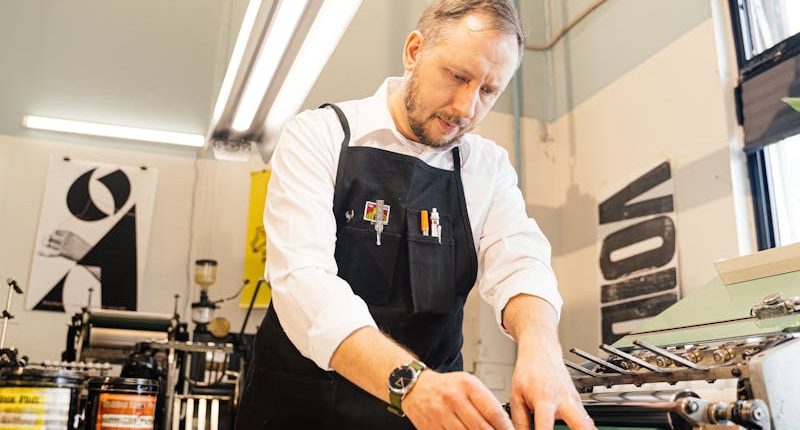Flexographic Printing Jobs: Skills, Tools & Career Insights
When people think of printing, they often imagine magazines, flyers, or business cards. But behind many of the packages, labels, and wrappers we see every day is a printing method called flexographic printing—and it’s opening up exciting career opportunities for skilled hands-on workers.
If you’re curious about this growing field, considering a hands-on trade, or simply want to understand the career path of a flexographic printer, this guide is for you.
What is Flexographic Printing?
Flexographic printing (commonly referred to as flexo printing) is a fast and versatile method that uses flexible printing plates to transfer ink onto a variety of materials—everything from plastic and metallic films to paper and cardboard.
It’s widely used in label printing, food packaging, and corrugated box manufacturing, where speed and consistency are key. The process allows for high-speed production and works exceptionally well for long print runs.
Flexographic vs. Digital Printing: What’s the Difference?
Both digital and flexo printing have their place in the modern print industry, but they’re quite different in how they work and where they shine.
- Flexographic printing uses physical plates and is ideal for high-volume runs, especially in packaging.
- Digital printing, on the other hand, doesn’t require plates and is great for shorter runs or personalized items with variable data.
So, while digital printing is popular for custom business cards or brochures, flexo printing dominates the packaging and labeling sector—making it an essential process for many brands.
What Does a Flexographic Printer Do?
A flexographic printer operates specialized presses that apply ink using flexible plates. It’s a detail-focused role that involves:
- Setting up and maintaining flexo presses
- Preparing and installing printing plates
- Monitoring print quality, color accuracy, and registration
- Performing basic machine maintenance and troubleshooting
This job is perfect for someone who enjoys working with machines, pays close attention to detail, and is comfortable in a fast-paced production environment.
Skills & Traits You’ll Need
- A strong eye for color and alignment
- Mechanical aptitude to operate and maintain equipment
- Time management and the ability to work on tight deadlines
- Basic understanding of print materials and ink types
- Ability to follow safety and quality standards
Many employers offer on-the-job training, especially for entry-level or apprentice roles.
What’s the Career Path Like?
You can start with an apprenticeship or entry-level machine operator role. With experience, you might advance to lead operator or shift supervisor positions, and potentially move into production planning or management.
This trade-focused path offers stability, hands-on learning, and long-term opportunities in a thriving industry.
Now Hiring: Flexographic Printing Apprenticeship
Looking to get started? There’s a fantastic opportunity available now on PrintJobs.
Flexographic Printing Apprenticeship – Apply Now
This is your chance to gain real-world experience, train under industry experts, and build a rewarding career in print manufacturing.
Whether you’re just entering the workforce or considering a career change, flexographic printing is a smart, skill-based trade with serious growth potential.
Final Thoughts
Flexographic printing might not be the most well-known job out there—but it’s an essential, fast-growing area of the print world. With packaging and labeling needs increasing globally, the demand for skilled flexo printers is rising right along with it.
Ready to jump in? Check out PrintJobs today for the latest opportunities in the industry, including the Flexographic Printing Apprenticeship and more.
